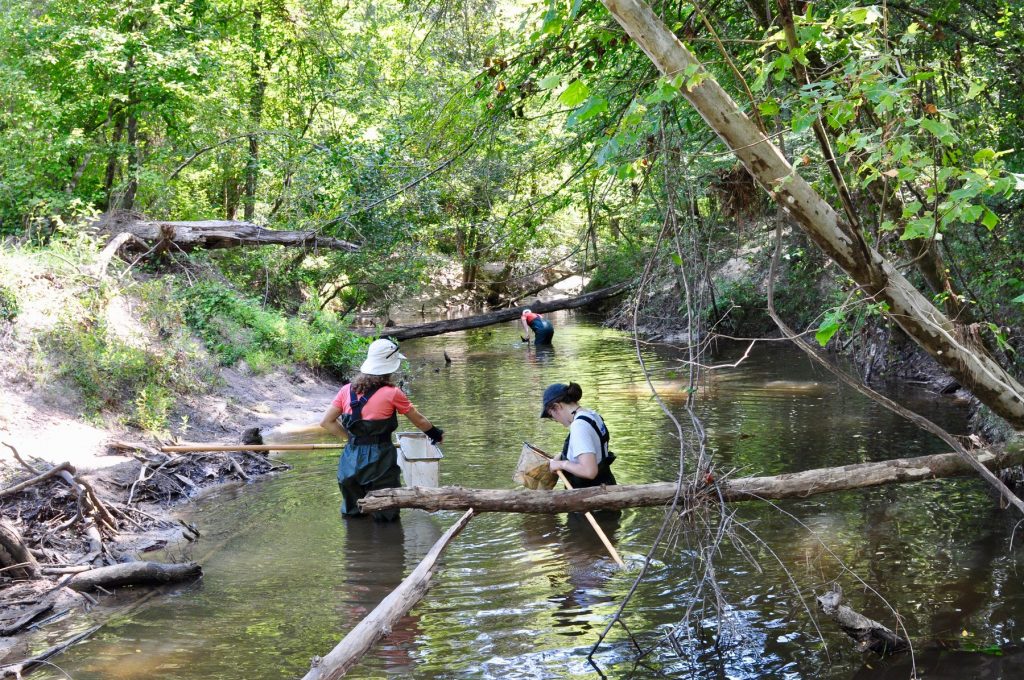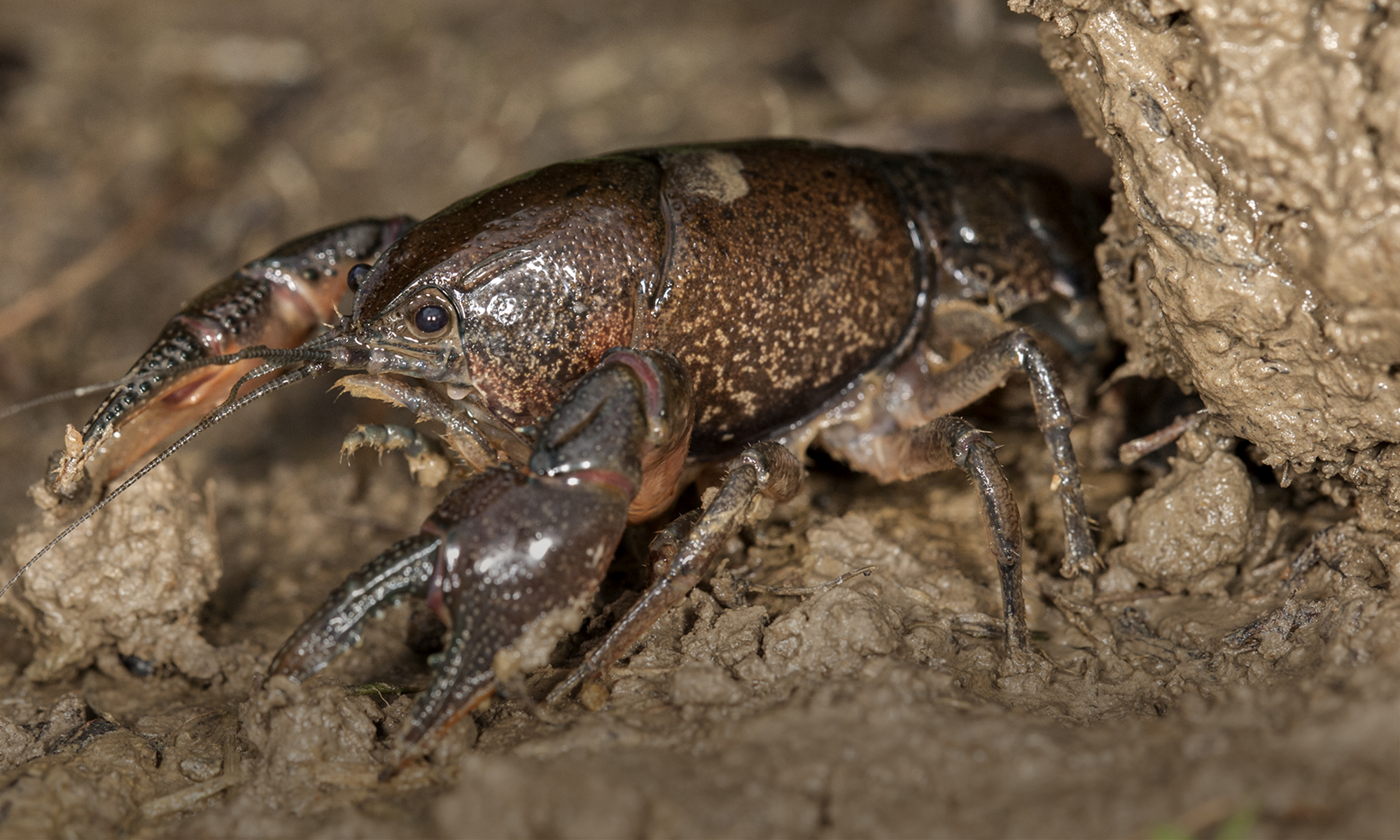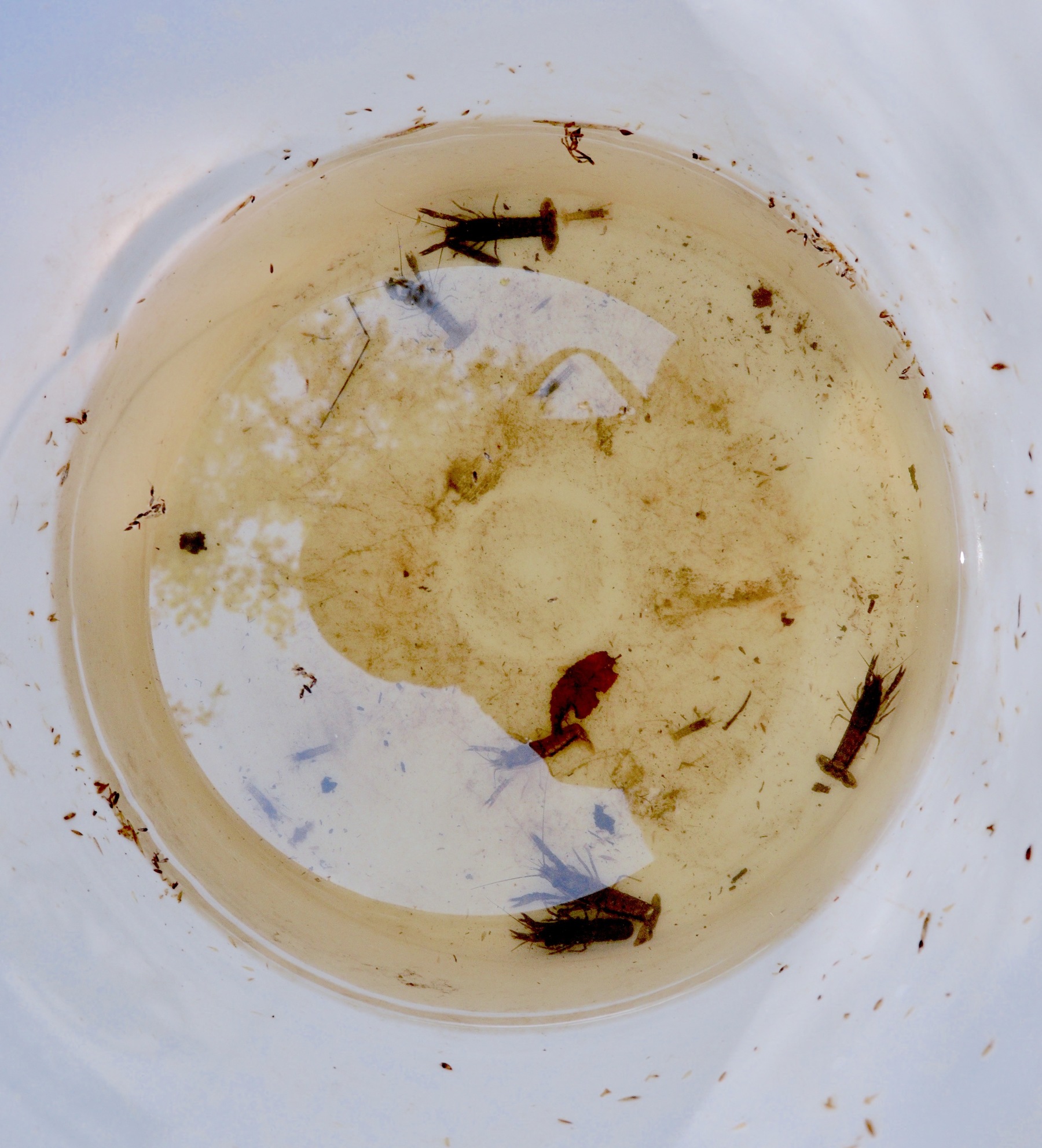
In an attempt to gain greater insights into five at-risk species, researchers from the Illinois Natural History Survey (INHS) are working with the U.S. Department of Defense, Construction Engineering Research Laboratory (CERL), and the Department of Natural Resources and Environmental Sciences at the University of Illinois to study endangered and threatened species in a new way.
This seemingly unlikely collaboration is testing a promising technology called environmental DNA, or eDNA, to assess the status and distribution of the Calcasieu Painted crayfish, Kitsatchie Painted crayfish, Texas Pigtoe mussel, Louisiana Pinesnake, and the Alligator snapping turtle in Fort Polk, Louisiana.
“These are rare, hard to find species, and we are comparing the utility of conventional sampling and eDNA,” said, Mark Davis, a conservation biologist at INHS. “This work is important because eDNA might be faster, more efficient, and more cost effective than conventional sampling; now we will find out if it really is.”
The way eDNA works is organisms create genetic trails from the DNA through cells (skin, fins, feces) they shed within their environments. Scientists can detect the residual DNA through water or soil samples that can reveal species present in the environment. In the case of the Alligator snapping turtle, eDNA sampling was faster than trapping in identifying this at-risk species in known locations, but also revealed new locations where conventional methods had not revealed its presence.
“These turtles along with freshwater mussels and crayfish, are some of the most threatened groups of aquatic species in North America, but are extremely understudied,” said University of Illinois graduate student Jordan Holtswarth, who assisted Davis with eDNA sampling at Fort Polk. “The development of eDNA sampling could help us learn more about these species than traditional sampling has allowed in the past.”
“eDNA could provide substantial impact in conservation listing decisions, and potentially become the means for helping agencies in decision making,” Davis said.
The Calcasieu Painted crayfish, Kitsatchie Painted crayfish, and the Texas Pigtoe mussel are proposed to be listed as endangered by the U.S. Fish and Wildlife Service. The Louisiana Pinesnake is listed as threatened and the Alligator snapping turtle’s conservation status is currently under review. Davis and his team used eDNA to sample the Fort Polk environment for each of these species.
Former University of Illinois undergraduate student Elise Snyder worked on the project with Davis’ group and performed eDNA sampling of the Alligator snapping turtle. “eDNA is a great way to collect data while minimizing environmental disturbance, which is especially valuable when working with threatened or endangered species,” said Snyder, “This experience has been extremely helpful in preparing me for a future career by learning new lab techniques and procedures, and how to work with such small quantities of DNA.“ Snyder is now a Ph.D. student at the University of Notre Dame doing research on a similar project exploring the movement of eDNA in flowing water.
A key problem for conservationists is that once an organism becomes a protected species, the protocol for how researchers can study that organism might change entirely. Due to its non-invasive nature, eDNA may be the only way for scientists to study and monitor protected species with more stringent research provisions.
This research was supported by the U.S. Department of Defense and the Louisiana Department of Game and Fish.




